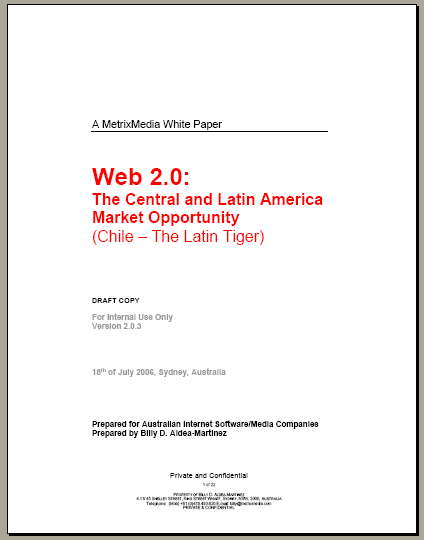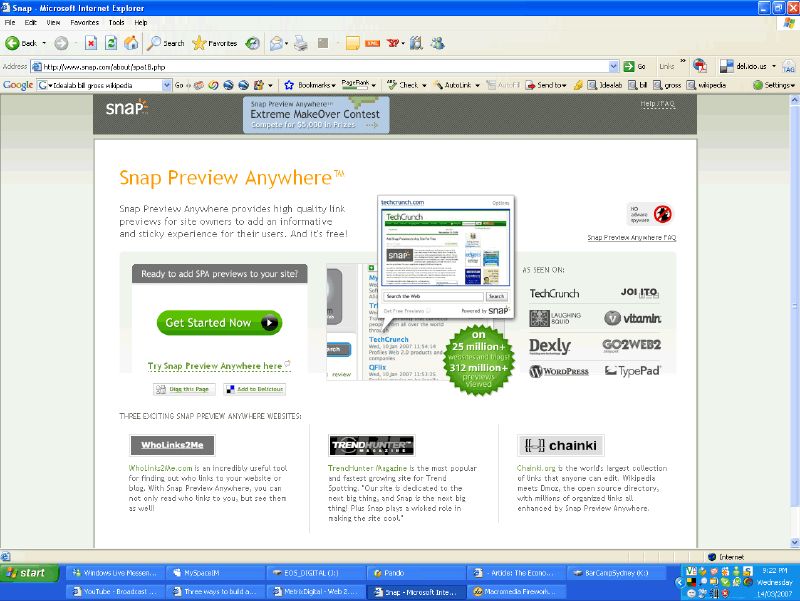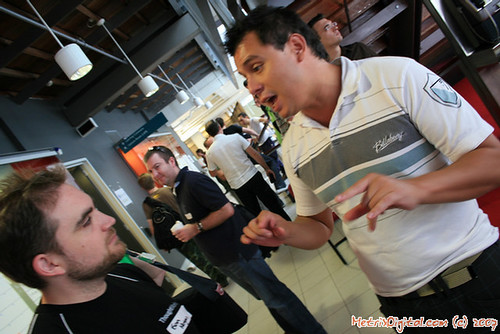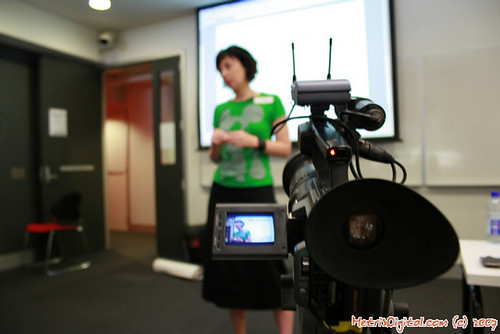
I have been reading
Andrew Pascoe's Blog for quite sometime now. I admire his discipline to be able to blog consistently offering a daily mash-up up digital news reporting.
Just about every other Aussies that I know in the digital space reads his blog at least once a week.
I emailed him last week for an interview and he kindly obliged, engaging on a keen discussion on the web and how Australian companies embracing Web 2.0.
-
BAM: How long have you been blogging for?
AP: Since November 2004 - I started when I was still in Brisbane because I couldn't find any Australian digital media regular sources so figured I may as well start my own.
It's funny looking back on my very first posts, how archaic some of them seem now.
BAM: How did you get started in the digital industry?
AP: Like a lot of people in media agencies, I just stumbled across 'media' - my path was via work experience way back in high school. I'd always been around computers, helped by my older brother being in IT, so media & computers intersected at digital media.
I'd shown ability in the area, so the media agency in Brisbane I started at was happy to make me the online media person.
BAM: As the Interactive Media Manager at Sputnik, what does your role entail?AP: Two main facets: The first is overseeing all the 'typical' media functions (being a sounding board for the media team when developing media plans, media negotiations, bitching & moaning about lack of consistency between publisher specs).
Second, is helping seed a greater understanding across the whole agency - we're full service so have creative, tech dev, and account management - of digital media from the penetration/consumption perspective.
A large part of that second facet can sometimes be playing devil's advocate also - sexy new technologies and sites aren't worth pursuing if they're not being used by the appropriate audience.
BAM: Sometimes Sexy New Technologies need to be experimented with, after all this whole Banner thing once was Sexy New Technology. So do you tell clients not to consider SNT?AP: Definitely agree, and because of that, we most certainly tell clients to consider SNT. (I like the acronym - although it needs a vowel - maybe SNeT?) Where the SNeT fits the desired target and objective, we recommend it - either as a core or supplementary activity depending on the campaign (and yeah, its usually supplementary to allow for testing).
Where the SNeT doesn't necessarily fit the target or objective, we might make the client aware of it to keep them informed but recommend not using it.
Regardless of clients usage, we try to test internally, or at the least become familiar & comfortable with them, all the SNeT.
BAM: What is a hot idea with your clients at the moment?
AP: It hasn't been necessarily raised by clients, but an opportunity that is going begging at the moment is selling Australian eyeballs of blog ad networks.
Companies like
Federated Media and
BlogAds in the US present a nice opportunity for an Australian sales house to start selling the blogs in their networks to Australian readers.
Twitter is the latest new technology/fad we are seeing having some appealing campaign applications, when mashed up with mapping (think any verticals where location is either essential or an enhancer).
Also, few clients were keen to discuss
affiliate marketing again (both for and against) after seeing the trade press coverage of the recent
RSVP/Commission Monster activity.
BAM: Are you able to share the details of the Twitter/Mashed example?AP: It's a bit too early at this stage I'm afraid. There are some products/services though that are more broadly about location and places, and activity at places, than something generic like a store locators. I'll let you know when its live though : )
BAM: How receptive are Australian Companies to new ideas?AP: This combined with my response about what's coming up in the next 6 months is going to make me sound like one big negative nellie.
Seth Godin sums it pretty well: there's two reasons people say no to your idea - "it's been done before", or "it's never been done before."
When we are talking about new media ideas, the translation is that no one ever got fired for buying a certain number of (TV)
TARPs, or buying the (outdoor) supersite that's on the managing director's route to work.
This points to something though: as a digital industry, we need to be selling our story more thoroughly, and educating far, far more thoroughly.
BAM: Most Australians do things, once they have been proven to work, however at that stage everybody is jumping on the bandwagon, diluting the effectiveness. Additionally, it's hard to educate if clients if they are not willing to experiment a little, create new frontiers. How do you manage that paradox?
AP: I think the answer to that lies in on two fronts:
The first is developing the skill to locate from overseas examples in the right verticals or using the same technologies etc and pulling out the parts that can be applied to this market.
The second is finding the types of clients here that realise if they do not test things now they will struggle 3,4,5 years down the track when the current traditional media solutions are even more fruitless (the sorts of marketers I'm talking about here are
what Max Kalehoff calls "the happy loser" - from those organisations that are building in higher levels of unpredictability and periodic loss into their models)
BAM: Where do you see the Australian industry heading in the next 6 months?AP: 6 months is a pretty short space of time - one that is very easy to see stasis. Online spend is growing by default at such a rate that for many parties - from both/all sides of the equation - there is no need to do much different from right now - a rising tide floats all boats as the saying goes.
I'd in fact settle for all Aust publishers to finally be using the proper names of the
IAB standard ad sizes in their communication, sometimes in the next 6 months. Seems we can only expect baby steps in this, and similar, regards.
BAM: A while back in a blog entry you stated that no Digital firms should hire an individual that does not blog or have a del.icio.us account, why is that?AP: Haha - yes, I recall that post. Looking back on it perhaps I was being a little too literal. If you think about offline media (& creative) agencies everyone there has grown up with all of the media they are planning and buying and creating for and talking about.
This also applies to the standard online banner media now. Anything beyond that though is all the newest of the new digital media, so planners simply can't have spent 10 or 15 or 30 years with these mediums.
If they can't have picked up on the characteristics of these new mediums by years of general exposure as with offline/traditional mediums, then to begin to understand their strengths and weaknesses, you have to be absorbed by it, which includes having practical hands-on experience.
The best example of this is looking at the tone of an approach to a blogger by a non-blogger, but the same holds true for other activities such as the metaverses of
Second Life, or Twitter.
END
 This morning on Bloomberg the newsreader announced that US Internet consumer spending has dropped by 18% for the Christmas period of 2007.
This morning on Bloomberg the newsreader announced that US Internet consumer spending has dropped by 18% for the Christmas period of 2007.










 As per my last post, I recently read an excellent article on
As per my last post, I recently read an excellent article on  Yesterday after ordering my mid morning Latte I picked up
Yesterday after ordering my mid morning Latte I picked up  Through my day job at
Through my day job at 
 One of the many things that i love about the web 2.0 days is that every day as
One of the many things that i love about the web 2.0 days is that every day as 

